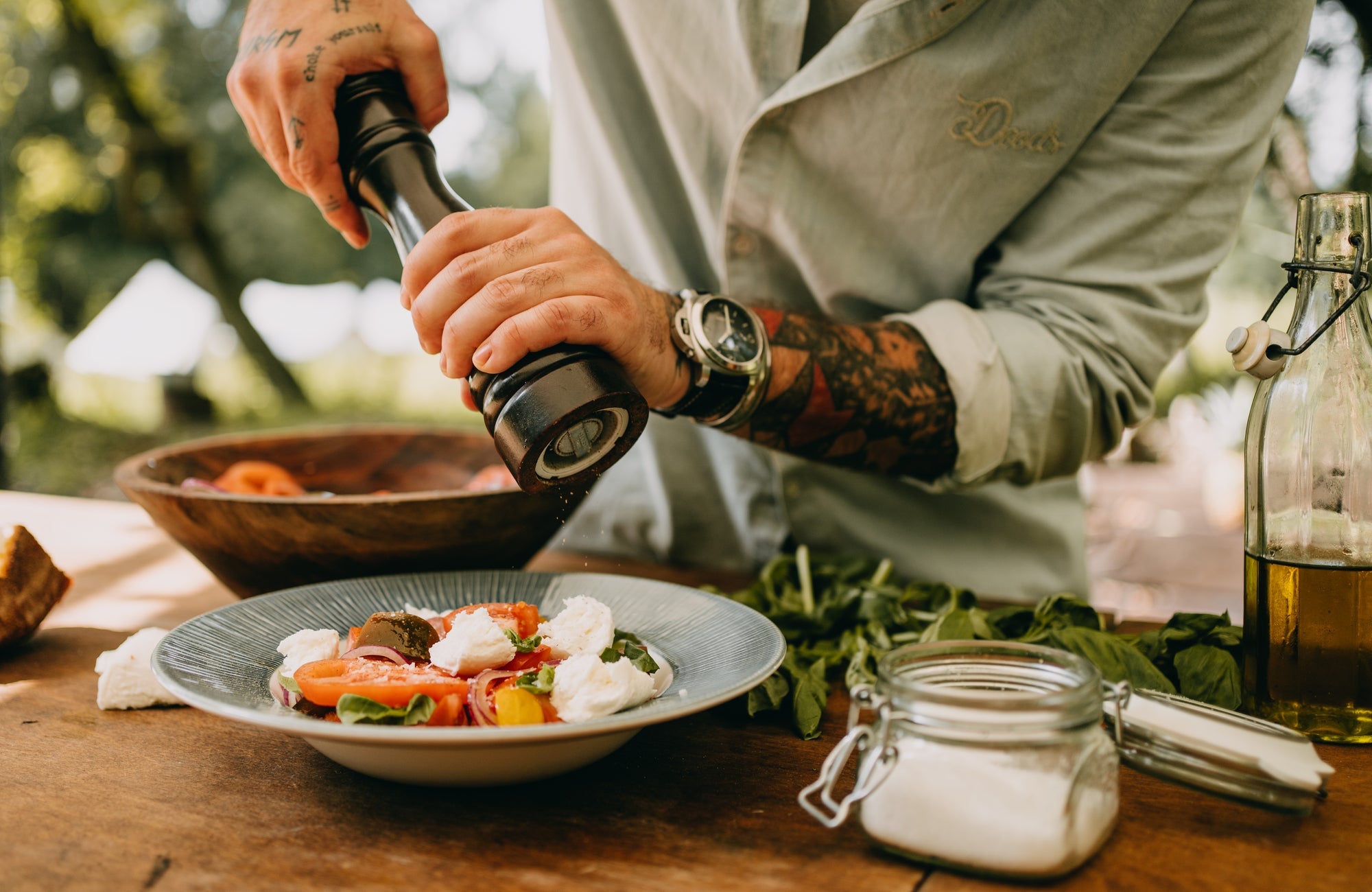




About FuegoFire is the most powerful element. It creates warmth, lights our way and it gives us hope. It can burn us and bond us. Above all, it provides the possibility to cook our meals. We are the only species which cooks and that's what makes us human. Fuego is a wild cooking school. Nature is our kitchen. We don’t need professional ovens or induction stoves. We cook over an open fire, do the prep work with the blue sky above our heads and feast in a yurt tent with Persian rugs and furs on the floor. |
|

serves 2
|
This salad is a great dish by itself, when you are feeling guilty from eating too much meat, or as a mental detox – let's be honest it does sound pretty healthy. It can also be used a side dish to whatever poultry or pork. It goes like this. Julienne the apples, pear and celery stalk. Cut the shallot and pick off the parsley leaves from the stalks. Mix it all together. Combine 3 parts olive oil and one part lemon juice, add mustard and season with salt and pepper. Use the Vinaigrette to finish the salad and you can serve. |

serves 2
|
Salad really can be a satisfying dish especially when it contains cheese. Where there is a cheese, there is happiness. Soft pears with crunchy kohlrabi and intense blue cheese are a perfect combo. Cut pears and kohlrabi into similar sized pieces. Cut figs to quarters. Pick some chervil leaves and mix everything with the dressing. Tear some blue cheese in your hands on top the salad and mix it gently so it looks nice and isn’t all mushy. |

|
Put pumpkin gently to the fire where there are a lot of hot coals. The pumpkin will slowly turn black but will be cooked beautifully inside. It can take anything between 20 to 40 minutes according the size of the pumpkin. To be sure, put a thin knife through the pumpkin. Little resistance is ok, but it mustn’t be tough. Put some sugar into a cast iron skillet and wait till it melts. Add walnuts and coat them in caramel. Set aside and chop it when it is cold. We recommend cleaning the skillet soon, because it’s hard to take out the caramel when cooled down. Open up warm pumpkin on a wooden board, get rid of the seeds, spread the flash, and season with olive oil, salt and pepper. Put some goat cheese on top, add picked onions, parsley and those amazing walnuts. Eat everything except the black skin. |

 |
|